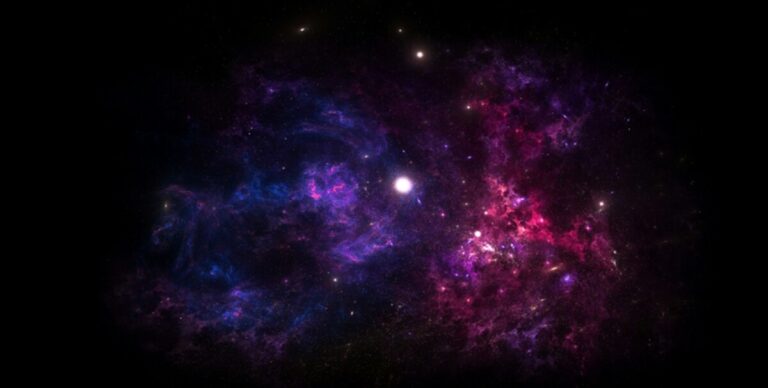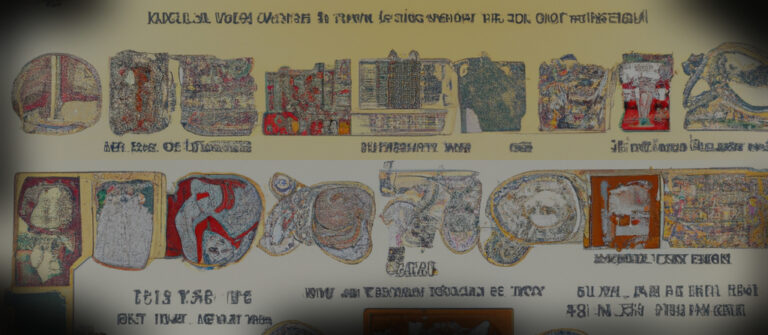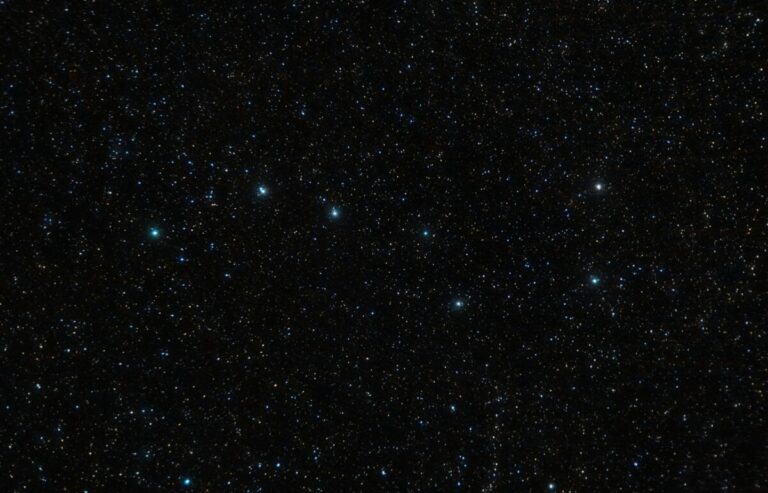The concept of creating a cosmic calendar to discuss the Big Bang theory and cyclic universe models is both engaging and thought-provoking, but to be clear, it is speculative. The leading idea is the Lambda Cold Dark Matter model, but even that theory is speculative. We do know much about our expanding universe, but the end of the universe remains spculative.
Cosmocycles offers a unique way to understand our place in the universe and the passage of cosmic time on a scale that resonates with our everyday experiences. While there are existing cosmic calendars, such as Carl Sagan’s, they do not specifically focus on the idea of cosmocycles or the cyclical nature of the universe.
In this article, I will introduce a new cosmic calendar, the Cosmocycle Calendar, which divides the universe’s history into a series of “cosmocycles” based on the notion of a cyclic universe. The term “cosmocycle” was chosen as a specific, unambiguous name to represent the complete cycle of the universe’s birth, evolution, and potential rebirth, distinct from the more general term “aeon.”
The Cosmocycle Calendar aims to provide a framework for discussing the various stages of the universe’s evolution and the possibility of life surviving through the collapse of the universe. It will delve into intriguing scenarios where life forms could potentially adapt to the changing cosmic environment, either by remaining on the outskirts of an event horizon or by exploring alternative universes with different physical properties.
To create this unique calendar, we will divide each cosmocycle into eight distinct “months” that represent various stages in the universe’s evolution. This structure allows for a more comprehensive exploration of the cyclic universe theories and offers a platform for discussing the possibility of life persisting through the collapse and rebirth of the cosmos.
By developing the Cosmocycle Calendar, we seek to foster a deeper understanding of our place in the grand scheme of cosmic time and to spark conversation and thought about the nature of the universe and the potential for life to endure through its cyclic evolution. This novel calendar aims to provide a fresh perspective on the universe’s history and inspire curiosity and exploration into the mysteries of the cosmos.
In a nutshell, here’s the Cosmocycle Calendar:
Season |
Month |
Estimated
|
Earth-like
|
Description |
Expanseon(Red-Shift Expansion) |
1-Protostellar Era. | 100 to 200 million years |
No. | Primordial gas and dust before stars form. |
| 2-Pop III Epoch | 200 to 500 million years |
No. | First generation Population III stars. | |
| 3-Pop II Epoch | 2 to 4 billion years |
Some. | Second generation Population II stars. | |
|
4-Pop I Epoch !! YOU ARE HERE !! |
10 to 30 billion years |
Yes. | Third generation Population I stars. | |
Contraceon(Blue-Shift Contraction) |
5-Deceleration Epoch | 10 to 15 billion years |
Yes. | The expansion of the universe starts to slow. |
| 6-Coalescence Era | 1 to 3 billion years |
Some. | Galaxies begin to merge creating massive super-galaxies. | |
| 7-Degeneration Epoch | 2 to 5 billion years |
Likely few. | Cosmic structures start to break down or disintegrate. | |
| 8-Convergence Epoch | 10 to 30 billion years |
No. | Final stage, strong gravity, no Earth-like planets. |
According to my new calendar, we are in the Pop I Epoch, which is the fourth “month” of the Expanseon season. This period is characterized by the formation and existence of Population I stars, which are the youngest and most metal-rich stars, formed from material enriched by the nucleosynthesis of earlier generations of stars.
Cosmocycle Calendar Explained
The Cosmocycle Calendar is a speculative concept that represents a complete cycle of the universe’s birth, evolution, and potential rebirth. It is inspired by cyclic cosmological models, such as the Cyclic Model or Conformal Cyclic Cosmology (CCC), which propose a repeating series of events in the universe’s history. It is important to emphasize that this concept is not based on established scientific theories but rather is a creative exploration of the potential structure of time in cyclic universe models.
Cosmocycle Seasons: Expanseon and Contraceon
Each cosmocycle consists of two seasons: Expanseon and Contraceon. These correspond to the periods of the universe’s expansion and contraction, respectively. The Expanseon season starts at the singularity and ends when the expansion of the universe starts to decelerate, while the Contraceon season begins when the contraction of the universe becomes predominant.
The Expanseon and Contraceon seasons are each divided into four distinct periods or “months.” These periods represent various stages of cosmic evolution during the expansion phase and hypothetical stages in a contracting universe. By subdividing the cosmocycle into these periods, we can explore different aspects of the universe’s evolution and investigate the possible consequences for the persistence of life throughout cosmic history.
Month 1: Protostellar Era
The Protostellar Era is a period characterized by a universe filled with primordial gas and dust, prior to the formation of stars. This era includes the emergence of the first dense regions that would eventually collapse and give birth to the earliest stars.
Traveling back to the Protostellar Era would place us in the initial stages of the universe’s evolution, before the birth of the first stars. This period marks the transition from a universe devoid of stars to one with the initial formation of the first generation of stars, known as Population III stars.
During the Protostellar Era, Earth-like planets would be virtually non-existent. The universe at this stage would be primarily composed of hydrogen and helium, with only trace amounts of other elements. The conditions necessary for the formation of rocky planets and life-supporting environments would not yet be present. Heavier elements and more complex structures required for Earth-like planets would only arise in later stages of the universe’s evolution, as stars formed and evolved through successive generations.
Month 2: Pop III Epoch
The Pop III Epoch corresponds to the early universe, shortly after the formation of the first stars, known as Population III stars. These stars, primarily composed of hydrogen and helium, have very low metallicity, marking the beginning of stellar evolution.
During the Pop III Epoch, Earth-like planets would have been highly improbable due to the low metallicity of the first-generation stars and unfavorable conditions for rocky planet formation and life development. The universe at this time would have consisted mostly of hydrogen, helium, and trace amounts of other elements.
Month 3: Pop II Epoch
The Pop II Epoch is marked by the formation and existence of Population II stars, which are older and have slightly higher metallicity than Population I stars. Formed from the remnants of Population III stars, these second-generation stars indicate an earlier stage in the universe’s history.
Earth-like planets would have been less likely to form and exist during the Pop II Epoch due to the lower metallicity of Population II stars and their environments. Although not impossible, the conditions for rocky planet formation and life-supporting environments would have been less favorable.
Month 4: Pop I Epoch
The Pop I Epoch is characterized by the formation and existence of Population I stars, the youngest and most metal-rich stars, formed from material enriched by the nucleosynthesis of earlier generations of stars. During this epoch, Earth-like planets can form and exist, as the conditions are suitable for stable planetary systems and life as we know it.
Month 5: Deceleration Epoch
The Deceleration Epoch is the initial period when the expansion of the universe starts to slow down due to increasing gravitational forces, eventually transitioning to the contraction phase. During this epoch, the likelihood of Earth-like planets existing or forming is relatively higher compared to later stages of the Contraceon season.
Month 6: Coalescence Era
The Coalescence Era marks a stage when galaxies merge more frequently as the universe contracts, leading to the formation of massive super-galaxies. The likelihood of Earth-like planets existing or forming during this era is uncertain, as the conditions would be quite different from earlier stages, and intense gravitational interactions during galaxy mergers could disrupt planetary systems.
Month 7: Degeneration Epoch
In the Degeneration Epoch, stars and other cosmic structures break down or disintegrate due to increasing gravitational forces in the contracting universe. The likelihood of Earth-like planets existing or forming is significantly reduced, as the environment would be less conducive to the formation and maintenance of stable planetary systems.
Month 8: Convergence Epoch
The Convergence Epoch is the final stage of the Contraceon season, characterized by the universe’s continued contraction. As gravitational forces dominate, the likelihood of Earth-like planets existing or forming is highly unlikely due to the extreme conditions present and the disruption of stable planetary systems. The universe would be approaching a new singularity, with conditions vastly different from those that allowed the formation of Earth-like planets during earlier stages.
Time and Length of Cosmocycle Months
The lengths of the proposed months in the cosmocycle concept are uneven, and I believe that’s acceptable. Let me explain why. Time isn’t real; it’s a human construct to measure the occurrence of events. A day is marked by the sun rising and setting, while a year represents Earth’s journey around the Sun. We divide a year into 12 months, loosely based on lunar cycles. Every four years, we add a day to the year. So, the cosmocycle calendar I propose is based on some of the events of the Big Bang theory.
I developed this concept for a few reasons. Firstly, it helps me better understand some of the Big Bang theories. Secondly, time fascinates me. Time serves as a measure of two points on my journey, a duration of events, or a specific space-time point. It also exemplifies social constructs. Grasping the details and history of time can help you recognize the constraints of social constructs, allowing you to make better use of them and enrich your life. Understanding alternate social constructs from different cultures and time periods can help broaden your perspective. The knowledge of history fosters an open mind.
Did you know that time is not the same for any two people? Time is relative due to the effects of time dilation, which is influenced by velocity and mass. These effects become more pronounced when dealing with objects moving at extremely high speeds or under strong gravitational fields. Einstein’s theory of relativity explains that time varies depending on an observer’s position relative to a gravitational force and their speed. In other words, time can pass at different rates for different people.
Humanity has confirmed this phenomenon. For example, if you take two identical clocks, place one on a table and one on the floor under the table, the one on the floor runs slower, regardless if the clocks are mechanical or electric. Twins can also age at different rates if one lives at a low elevation, and the other at a high elevation. The twin living at the Dead Sea will age slower, experiencing more “time” in life. But, if they both die at the same time, we say they were the same age because we count number of times the Earth went around the Sun, we count those events.
Conclusion
The cosmocycle concept, featuring Expanseon and Contraceon seasons and their corresponding epochs (months), offers a relatable way to think about the immense duration of the Big Bang. It also allows us to talk about things around a cyclic universe and various other Big Bang theories. It helps our simple human minds relate to these immense time periods. I acknowledge that these theories are speculative, but so are unicorns and big foot and we spend an aweful lot of time speculating about them. And, the Big Bang theory and cyclic universe theories are more sound than those because they are based on reality and are immediately negated as soon as other theories are more likely. Right now it is extremely more likely that unicorns and apes known as big foot do not exist than they do, but people still insist on talking about them. As current observations of the universe, such as the accelerating expansion due to dark energy, suggest a different scenario for the ultimate fate of the cosmos. Nonetheless, exploring these ideas allows us to expand our understanding of time and the universe we inhabit.







